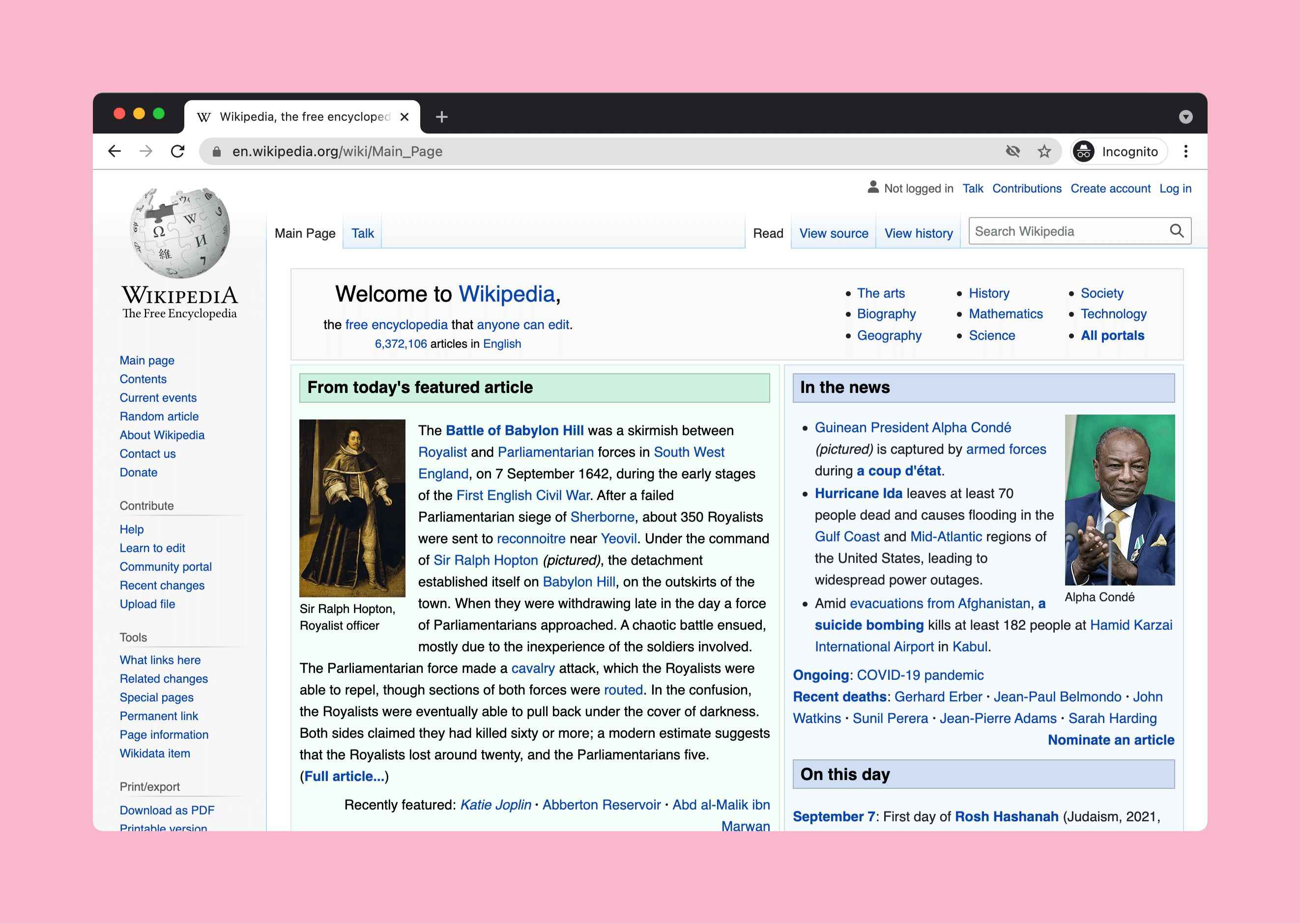Introduction
Downloading Wikipedia pages can be a valuable resource for various reasons, such as offline research, archiving, or simply having a backup of information. While accessing Wikipedia through its website is convenient, there may be instances where you need to download specific pages or even the entire website for offline use.
In this article, we will explore various options for downloading Wikipedia pages. Whether you want to download individual pages, use Wikipedia’s API, rely on third-party tools, or access database dumps, we’ll cover the steps and possibilities available to you.
Before we delve into these options, it’s important to note that the content on Wikipedia is licensed under the CC BY-SA 3.0 license, which allows for sharing and adaptation. However, it is essential to respect the rights and attributions associated with the content you download.
Now, let’s explore the different methods that can help you download Wikipedia pages and find the approach that best suits your needs.
Option 1: Downloading Individual Wikipedia Pages
If you only need to download specific Wikipedia pages, you can do so easily using your web browser’s built-in functionality. This option is ideal when you have selected pages of interest and do not require the entire Wikipedia site.
To download an individual Wikipedia page, follow these steps:
- Navigate to the desired Wikipedia page in your web browser.
- Click on File in the menu bar and select Save Page As (or use the keyboard shortcut Ctrl + S).
- Choose a location on your computer where you want to save the page.
- Specify the format as HTML or Webpage, Complete (or use the default setting).
- Click Save to start the download.
Once the page is downloaded, you can access it offline using any web browser. This method allows you to have a local copy of the page and view its content without an internet connection.
Keep in mind that while this option is convenient for downloading individual pages, it may not be practical for downloading a large number of pages or an entire category of articles. In such cases, alternative methods may be more efficient.
Now that you know how to download individual Wikipedia pages, let’s explore other options that provide more extensive downloading capabilities.
Option 2: Using Wikipedia’s API
If you require more flexibility and automation in downloading Wikipedia pages, you can utilize Wikipedia’s API (Application Programming Interface). The API allows you to access and retrieve a wealth of information from Wikipedia’s extensive database, including page content, revision history, and more.
To download Wikipedia pages using the API, follow these steps:
- First, you need to acquire an API key by creating an account on the Wikimedia Developer Hub.
- Once you have your API key, you can use it to make requests to the Wikipedia API and retrieve the desired pages.
- Using programming languages like Python or JavaScript, you can write code to interact with the API and download the specific pages you need.
- The API provides options to fetch page content, page revisions, categories, and other metadata, allowing you to customize your download according to your requirements.
Utilizing the Wikipedia API provides a more powerful and efficient method for downloading pages, especially when dealing with a large volume of content. It also allows you to automate the process and retrieve information programmatically.
However, using the API requires some programming knowledge and understanding of how to make API requests. If you’re not familiar with coding, there are third-party tools available that can simplify the process for you.
Now that you are familiar with downloading Wikipedia pages using the API, let’s explore alternative options that provide convenience and ease of use.
Option 3: Using Third-Party Tools
If you prefer a more user-friendly and intuitive approach to downloading Wikipedia pages, using third-party tools can be a great option. These tools are designed to simplify the process and provide a user-friendly interface for downloading Wikipedia content.
There are several third-party tools available that allow you to download Wikipedia pages with just a few clicks. Here are a few popular options:
- OfflineWiki: OfflineWiki is a cross-platform application that enables you to download and browse Wikipedia content offline. It offers a simple interface to search for and download specific pages or even entire categories.
- WikiTaxi: WikiTaxi is a Windows application that allows you to download Wikipedia’s database dumps and browse them offline. It provides a fast and straightforward way to access Wikipedia content on your computer.
- XOWA: XOWA is a Java-based application that lets you download and manage Wikipedia’s database dumps. It offers advanced features such as offline editing, searching, and annotations.
These tools typically give you the option to download Wikipedia pages in various formats, such as HTML, PDF, or text, and include features like search functionality and offline browsing.
Using third-party tools can be a convenient and efficient way to download Wikipedia pages, especially if you prefer a graphical interface over coding or want additional features beyond basic page downloads.
Now that you’re aware of these third-party tools, let’s explore another option for downloading Wikipedia content – using database dumps.
Option 4: Using Database Dumps
For downloading a significant amount of Wikipedia data or even the entire website, using database dumps can be the most efficient and comprehensive option. Database dumps are complete copies of Wikipedia’s content, including all articles, revisions, categories, and more.
Here are the steps to download Wikipedia pages using database dumps:
- Visit the Wikimedia Downloads page to access the latest available database dumps.
- Choose the dump format that suits your needs. The most common formats are XML, SQL, and JSON.
- Download the database dump files, which may be split into multiple parts for manageability.
- Extract the downloaded files using file compression software, such as 7-Zip or WinRAR, if necessary.
- Once extracted, you can access the Wikipedia pages offline using specialized software like Kiwix or import the files into a local database for customized access.
Database dumps provide a wealth of data, but keep in mind that they can be quite large in size, so ensure you have enough storage space to accommodate them.
Using database dumps allows you to have a local copy of the entire Wikipedia website, which can be handy for various purposes, including offline research, data analysis, or building personalized applications.
Now that you have explored the option of using database dumps, you are equipped with various methods for downloading Wikipedia pages. Choose the approach that best suits your specific needs and enjoy offline access to this vast source of knowledge.
Conclusion
Downloading Wikipedia pages can be a valuable resource for offline research, archiving, or retrieving information from the website without an internet connection. In this article, we explored four options for downloading Wikipedia pages: downloading individual pages, using Wikipedia’s API, utilizing third-party tools, and accessing database dumps.
If you only need to download specific Wikipedia pages, the option of downloading individual pages using your web browser can be sufficient. However, if you require more flexibility and automation, using Wikipedia’s API allows you to retrieve page content and other metadata programmatically.
For a user-friendly and intuitive approach to downloading Wikipedia pages, third-party tools such as OfflineWiki, WikiTaxi, and XOWA offer convenient options with additional features like offline browsing and search functionality.
Finally, for those needing an extensive amount of Wikipedia data or the entire website, using database dumps provides a comprehensive solution. With database dumps, you can have a local copy of Wikipedia’s content, suitable for offline access and data analysis.
After considering these options, you can choose the method that best suits your needs, whether it’s downloading individual pages, utilizing the API, using third-party tools, or accessing database dumps. Each approach has its own advantages and considerations depending on the volume of content, level of automation required, and your technical expertise.
By downloading Wikipedia pages, you can access knowledge and information even when you are offline, ensuring you have continuous access to valuable resources. So, pick the approach that works best for you and dive into the world of offline Wikipedia browsing!

























